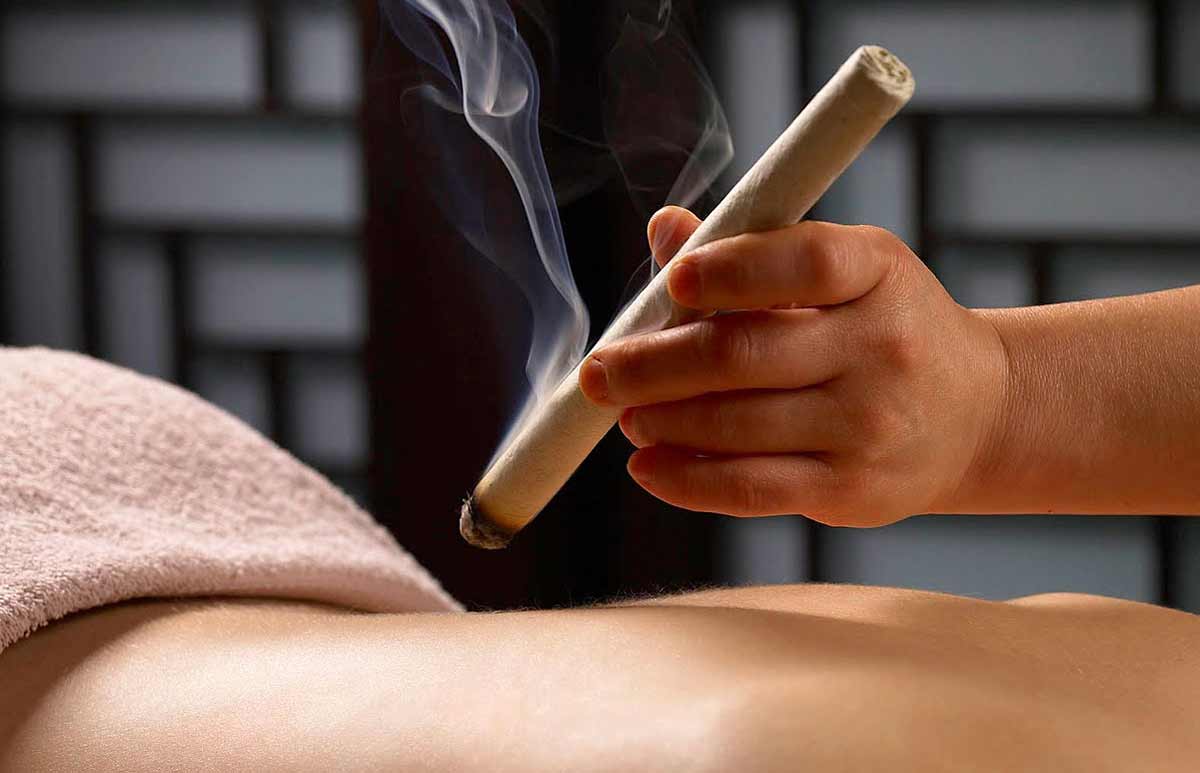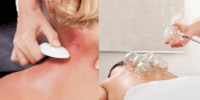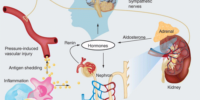Moxibustion Therapy: Utilizing Heat For Healing And Balancing Qi

Moxibustion therapy, a traditional Chinese medicine technique, has been utilized for centuries as a means of restoring balance and promoting healing within the body. This therapy involves the application of heat to specific acupoints on the body in order to stimulate the flow of qi, the vital energy that is believed to circulate throughout the body.
By restoring the natural balance of qi, moxibustion therapy aims to address a wide range of conditions and ailments, including pain, inflammation, digestive disorders, and menstrual irregularities. There are different types of moxibustion techniques, each with its own unique benefits and applications.
Despite its long history of use, the safety and effectiveness of moxibustion therapy have been supported by a growing body of scientific research. Incorporating moxibustion into a holistic wellness routine can offer individuals a natural and effective approach to maintaining optimal health.
To ensure the best outcomes, it is important to seek out a qualified practitioner who can provide guidance and personalized treatment.
The History and Origins of Moxibustion Therapy
The history and origins of moxibustion therapy can be traced back to ancient China, where it was developed as a form of traditional medicine to promote healing and balance the flow of qi in the body.
Moxibustion therapy involves the burning of dried mugwort, a herb known as moxa, near specific acupuncture points on the body. The use of moxa has been documented in ancient texts such as the Huangdi Neijing (Yellow Emperor’s Inner Canon), which dates back to the Han Dynasty (206 BCE – 220 CE).
According to traditional Chinese medicine theory, moxibustion therapy helps to warm and invigorate the flow of qi, dispel cold and dampness, and promote circulation and healing.
Over time, moxibustion therapy has been refined and integrated into various traditional medical systems, such as Japanese Kampo medicine and Korean traditional medicine.
Today, it continues to be used as a complementary therapy in many countries around the world.
Understanding the Concept of Qi and Its Importance in Traditional Chinese Medicine
Understanding the concept of qi is essential in traditional Chinese medicine as it plays a central role in maintaining health and well-being.
Qi, often translated as ‘life energy,’ is believed to flow through the body’s meridians, or energy channels, and is responsible for maintaining the balance and harmony of the body’s functions.
According to traditional Chinese medicine, when qi is abundant and flowing smoothly, a person experiences good health. Conversely, when qi is depleted or blocked, illness and disease can occur.
The concept of qi is closely tied to the idea of yin and yang, which represent opposite yet complementary forces in the universe. Achieving balance between yin and yang is essential for optimal health.
Traditional Chinese medicine practitioners utilize various techniques, such as moxibustion therapy, to restore the flow of qi and promote healing and wellness.
How Moxibustion Therapy Works to Restore Balance and Promote Healing
One key aspect of the traditional Chinese medicine technique known as moxibustion is its ability to restore the body’s natural state of equilibrium and facilitate the process of recovery.
Moxibustion therapy involves the application of heat to specific acupoints on the body, using a burning herb called mugwort. This therapeutic technique aims to stimulate the flow of qi, the vital energy that flows through meridians in the body.
By applying heat to these acupoints, moxibustion therapy enhances blood circulation and promotes the body’s ability to heal itself. Additionally, the heat generated by moxibustion helps to relax muscles and relieve pain.
Moreover, this therapy can also strengthen the immune system and boost overall well-being. Overall, moxibustion therapy works to restore balance and promote healing by harnessing the power of heat and stimulating the body’s natural healing mechanisms.
Different Types of Moxibustion Techniques and Their Benefits
There are various techniques of moxibustion that can be employed to enhance healing and restore equilibrium within the body.
One common technique is direct moxibustion, where a small cone or stick of moxa is directly placed on the acupuncture point and ignited. This type of moxibustion generates intense heat, which stimulates the acupuncture point and promotes blood circulation.
Another technique is indirect moxibustion, where the moxa is burned above the skin, without directly touching it. This method is often preferred for individuals with sensitive skin or those who cannot tolerate direct heat.
Indirect moxibustion can be further classified into scarring and non-scarring moxibustion, depending on whether it leaves a visible mark on the skin.
Each technique has its own set of benefits and can be tailored to meet the specific needs of the individual seeking moxibustion therapy.
Conditions and Ailments That Can Be Treated with Moxibustion Therapy
Various conditions and ailments can be effectively addressed through the application of moxibustion techniques, promoting the restoration of equilibrium and overall well-being within the body. Moxibustion therapy has been found to be beneficial for the treatment of a range of health issues.
Some of the conditions and ailments that can be treated with moxibustion therapy include:
- Digestive disorders: Moxibustion has been used to alleviate symptoms of conditions such as irritable bowel syndrome (IBS), indigestion, and diarrhea. It helps to regulate the digestive system and promote better digestion.
- Pain management: Moxibustion therapy is effective in relieving various types of pain, including muscle pain, joint pain, and chronic pain. It helps to improve blood circulation and reduce inflammation, providing pain relief.
- Immune system support: Moxibustion can strengthen the immune system, making the body more resistant to infections and diseases. It helps to balance the body’s energy and enhance overall health.
Incorporating moxibustion therapy into healthcare practices can offer a natural and non-invasive approach to treating various conditions, promoting holistic well-being.
The Safety and Effectiveness of Moxibustion Therapy
The safety and effectiveness of moxibustion therapy can be evaluated through scientific research and clinical studies, which provide evidence-based findings on its therapeutic applications.
Research has shown that moxibustion therapy is generally safe when administered by a trained practitioner, with minimal adverse effects reported. However, caution should be exercised in certain populations, such as pregnant women, as moxibustion therapy may have potential risks.
In terms of effectiveness, studies have demonstrated positive outcomes in various conditions, including pain management, gastrointestinal disorders, and gynecological issues. Moxibustion therapy has been found to promote blood circulation, enhance immune function, and regulate the balance of qi in the body.
Nevertheless, more rigorous research is still needed to establish its efficacy and safety profile, as well as to identify the optimal treatment protocols for different conditions.
Incorporating Moxibustion into a Holistic Wellness Routine
Incorporating moxibustion into a holistic wellness routine can provide additional benefits for individuals seeking to enhance their overall well-being. Moxibustion therapy, which involves the burning of mugwort herb near specific acupuncture points on the body, is believed to stimulate the flow of qi and restore the body’s balance.
By applying heat to these points, moxibustion therapy aims to improve circulation, boost the immune system, and alleviate various health conditions. The heat generated during the therapy penetrates deep into the body, promoting relaxation and reducing muscle tension.
Moreover, moxibustion can be easily integrated into other wellness practices such as acupuncture, massage, and meditation, further enhancing its benefits. However, it is important to consult a qualified practitioner before incorporating moxibustion into a wellness routine to ensure its safe and effective usage.
Finding a Qualified Practitioner and Getting Started with Moxibustion Therapy
To begin with the practice of moxibustion therapy, it is essential to find a qualified practitioner who can guide and administer the treatment effectively. Here are three steps to help you get started with moxibustion therapy:
- Research and seek recommendations:nnStart by researching reputable practitioners in your area who specialize in moxibustion therapy. Seek recommendations from trusted sources such as friends, family, or healthcare providers who have experience with this form of treatment.
- Check qualifications and credentials:nnEnsure that the practitioner you choose is licensed and certified in moxibustion therapy. Look for practitioners who have received training from recognized institutions and have a good reputation within the field.
- Schedule a consultation:nnOnce you have identified potential practitioners, schedule a consultation to discuss your health concerns and goals. Use this opportunity to ask questions about their experience, treatment approach, and expected outcomes. This will help you determine if the practitioner is the right fit for you.
By following these steps, you can find a qualified practitioner and embark on your moxibustion therapy journey with confidence.
Frequently Asked Questions
Are there any side effects or risks associated with moxibustion therapy?
Side effects and risks associated with moxibustion therapy include burns, skin irritation, and smoke inhalation. These adverse effects can occur due to the application of heat and the burning of the moxa herb.
How long does a typical moxibustion session last?
A typical moxibustion session usually lasts between 15 to 30 minutes. The duration may vary depending on the specific treatment plan, the condition being treated, and the preferences of the practitioner and patient.
Can moxibustion therapy be used to treat chronic pain conditions?
Moxibustion therapy has been shown to be effective in treating chronic pain conditions. Studies have demonstrated its ability to reduce pain and improve quality of life, making it a potential treatment option for individuals suffering from chronic pain.
Is moxibustion therapy suitable for children and pregnant women?
Moxibustion therapy is generally considered safe and suitable for children and pregnant women. However, it is important to consult with a qualified practitioner to ensure proper technique and appropriate treatment for individual cases.
How often should one receive moxibustion therapy for optimal results?
The optimal frequency of moxibustion therapy for optimal results varies depending on the individual’s condition and treatment goals. Consultation with a qualified practitioner is recommended to determine the appropriate frequency of sessions.








